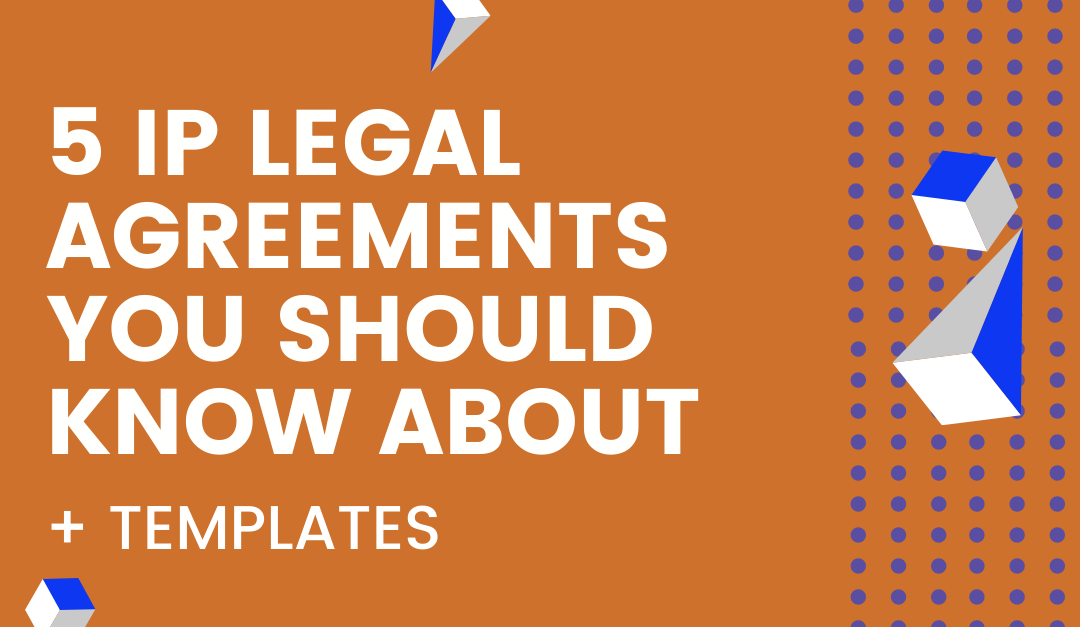Intellectual Property Agreements
Intellectual property is the resulting work or invention of someone’s creativity. For example, an individual who writes a book may seek to copyright the manuscript. A business with a popular logo or name may seek to trademark it to protect their rights. Creators seek to protect their rights through a number of ways. This is particularly important when they bring in others to work on an invention or creation. The following article will explore 5 legal intellectual property agreements that could prove useful in various scenarios.
1) Non-Disclosure Agreement
A non-disclosure agreement, or an “NDA,” is a signed agreement between parties that protects valuable and confidential information, and discourages theft of intellectual property. It will identify the ideas, creations, and anything else the creator wants to protect, and will usually specify a timeframe for how long the non-disclosure protections are in place. In addition, the agreement will include rules against competition and solicitation. There will also be terms outlining the penalties for violating the agreement.
An example of where an NDA may be required is a “venture pitch competition”. At these events, investors listen to pitches from entrants on various ideas and creations in exchange for funding, coaching, and networking opportunities. Participants share sensitive information with those who are evaluating the business idea. It’s important to ensure protections are in place so that this exposure doesn’t lead to commercial gain by someone other than the creator.
2) Work For Hire Agreement
When you hire a contractor to perform a task, a work for hire agreement is critical to ensuring there is a clear understanding of who owns the completed work. Without such an agreement, anyone who works on the project could feasibly have some rights to the creation. Having this agreement will ensure the party who have commissioned the work will retain the proper rights.
For example, an entrepreneur who has an idea for a smartphone app may use a work for hire agreement for the purpose of hiring a software developer to build the app, while they retain ownership of the creation.
Sample work for hire agreement
3) Confidentiality Agreement
At first glance, a confidentiality agreement and a non-disclosure agreement may seem like the same thing, but there are important differences. Both are used to protect confidential information, while an NDA is usually used when the requirement is for a unilateral party not to disclose information to third parties and public forums, particularly trade secrets and inventions. A confidentiality agreement will often include more than one party and will bind the parties to keep specific information confidential. There will often be more specific restrictions in place in a confidentiality agreement.
Employers and employees may use confidentiality agreements. Collaborators on a project may also choose to use them.
Sample Confidentiality Agreement
4) License Agreement
People use license agreements to grant rights to another party to perform a task such as produce goods in exchange for compensation. The party who owns the right to sell the license is the licensor. On the other hand, the party who is granted the right to the asset is the licensee. There will usually be specific rules on how the license may be used.
In May 2018, Nestle and Starbucks entered into a multibillion dollar licensing deal. As the licensee, Nestle agreed to pay $7.15 billion in cash to Starbucks for exclusive right to sell their products (single-serve coffee, teas, bagged beans, etc.) around the world through Nestle’s global distribution network. Starbucks also receives royalties from any products sold through Nestle.
Several types of license agreements can also be found here
5) Technology Transfer Agreement
A technology transfer agreement is another instrument for your IP legal toolkit. Individuals and organizations who wish to transfer technology to another party for a specific purpose usually make this type of agreement. These agreements will specify the nature of the license, as well as a timeframe for its usage. People often use them when universities make technology developed at their institution available for commercialization.
Sample Technology Transfer Agreements
Further Reading on Intellectual Property Agreements
If you are interested in learning more about intellectual property agreements, read our article on joint authorship and work for hire agreements.
Disclaimer: Nothing in this article shall be construed as legal advice, or as creating an attorney/client relationship.
Download the Free Infographic Below
___
 The Michelson Institute for Intellectual Property, an initiative of the Michelson 20MM Foundation, provides access to empowering IP education for budding inventors and entrepreneurs. Michelson 20MM was founded thanks to the generous support of renowned spinal surgeon Dr. Gary K. Michelson and Alya Michelson. To learn more, visit 20mm.org.
The Michelson Institute for Intellectual Property, an initiative of the Michelson 20MM Foundation, provides access to empowering IP education for budding inventors and entrepreneurs. Michelson 20MM was founded thanks to the generous support of renowned spinal surgeon Dr. Gary K. Michelson and Alya Michelson. To learn more, visit 20mm.org.

very useful insights. In India for citizens when Supreme Constitutional Law gives protection to properties , why to adopt complicated and time consuming smaller protection? In both cases of infringement one has to take the legal course for remedial measure .